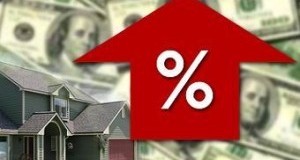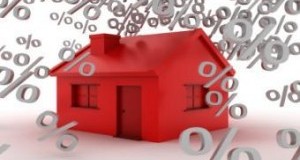Renter confidence rose 4.4 points from last year to 62.4, with roughly 5.2 million renters saying they expect to buy a home this year. That’s an increase of 1 million from last year, when 4.2 million renters said they expect to buy a home. Homeowner confidence rose 3.3 points from last year to 70.6.
Read More »Access to Mortgage Increases
Mortgage credit availability reached its peak in August 2004, recording an index score of 134.6. Access began to drop over the next several years. Then, in May 2007, both the housing and mortgage availability began a multiple year plunge, leaving home values down more than 22 percent and credit the tightest it had been in years. In September 2010, the ZMAI bottomed out at 9.6. Today, the ZMAI currently sits at 71.5 and access to mortgage credit has improved significantly, and is roughly two-thirds of the way back to the 2002 pre-crisis level of 100.
Read More »Mortgage Industry Professionals Optimistic About Business Conditions
Respondents cited low interest rates, a strong refinance business and higher consumer confidence as reasons for the increase in optimism. Those surveyed also mentioned incorporating new regulatory changes over the last year has helped them overcome obstacles of the past. Those who said their current business conditions have gotten worse cited regulatory challenges, minimal wage growth, and the end of the refinance boom.
Read More »Millennials Largest Group of Recent Home Buyers for Second Year
The median age of millennial homebuyers was 29, their median income was $76,900 and they typically bought a 1,720-square foot home costing $189,900. The typical Gen X buyer was 41 years old, had a median income of $104,600 and purchased a 1,890-square foot home costing $250,000. When asked about the primary reason for purchasing a home, a desire to own a home of their own was highest among Millennials at 39 percent. Younger boomers were the most likely to buy because of a job-related relocation or move, and a change in a family situation, most likely the birth of a child, was the highest among Gen X buyers.
Read More »Home Buyer Confidence Strong in 2015
The number of people buying homes in the U.S. has increased 5 percent within the last two years. Still, the survey found 2 in 5 American consumers feel there is a lack of inventory in their price range and 44 percent said they are not familiar with home affordability programs.
Read More »Research Says Bidding Wars Are Here to Stay
In the 1980s, only 3 to 4 percent of homes were sold in bidding wars. From 1995 to 2005 that number skyrocketed, with Washington D.C., having on the highest rates at nearly 30 percent of homes sold involved in bidding wars. However, according to the study although an increase in bidding wars was correlated with economic and housing booms, that rise was not consistent from one jurisdiction to another. In the Houston, the rate was only 11 percent, even though the city benefited from the housing boom.
Read More »Report Shows Salary Needed to Buy Homes in 27 Cities
On a national scale, with 20 percent down, a buyer would need to earn a salary of $48,603.82 to afford the median-priced home. Of course it is possible to buy a home with less than a 20 percent down payment, but a lower down payment means the buyer’s salary must be higher to afford the same home. In the national example above, a purchase of a median-priced home with only 10 percent down and including the cost of PMI increases the income needed to $56,140.44, an increase of $7,500.
Read More »Survey: Labor Force for Residential Construction is 3.5 Million Strong
The NAHB residential construction employment estimates include self-employed workers. Counting self-employed is particularly important in the home building industry since they traditionally make up a larger share of the labor force. According to the 2013 ACS, one out of four construction workers is self-employed, while an economy-wide average does not reach 10 percent of the employed labor force.
Read More »Fannie Mae Releases February 2015 National Housing Survey
One area where Duncan said needs improvement in order for the prediction of the economy "dragging housing upward" to come true is in the area of wage gains. According to the BLS employment report released last week, the average hourly wage increased from January to February by only 3 cents up to $24.78 – after rising by 12 cents from December to January.
Read More »Realtor.com Reports 20 Hottest Markets in the U.S.
“The price appreciation we’ve witnessed over recent months seems to be working to encourage more sellers to put their homes on the market,” said Jonathan Smoke, realtor.com chief economist. “A higher level of inventory along with growing demand should result in more contracts for both existing and new homes in February, leading to more closings in March.”
Read More »
 theMReport.com Your trusted source for mortgage banking news
theMReport.com Your trusted source for mortgage banking news









